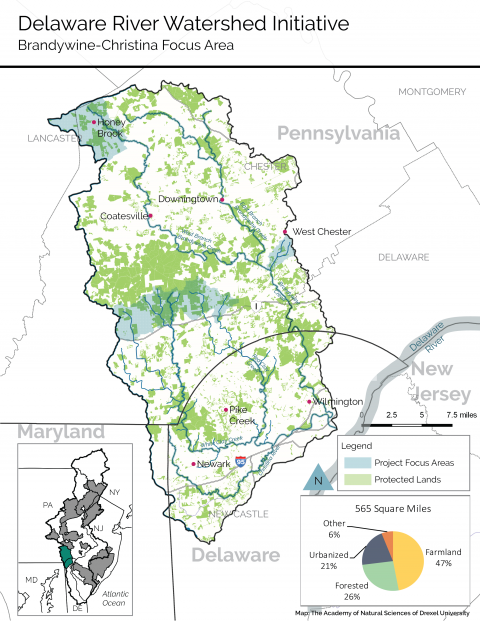It extends from the rolling piedmont in Pennsylvania to the flat coastal plain in Delaware, including the Brandywine, Red Clay and White Clay Creeks, and the Christina River. This pastoral landscape is known for its well-preserved early-American villages and historic Revolutionary War sites. It has inspired both world-renowned artists, including three generations of the Wyeth family that have become synonymous with the Brandywine Creek, and one of the oldest (and most effective) conservation movements in the nation.
However, the Brandywine-Christiana Cluster is on the edge of the Philadelphia and Wilmington metropolitan areas and has experienced intense development pressure over the past thirty years. Chester County, for example, is among the fastest growing counties in Pennsylvania. Communities in this cluster struggle to balance concern for water quality with the needs of an agricultural economy and the impacts of sprawling development.


